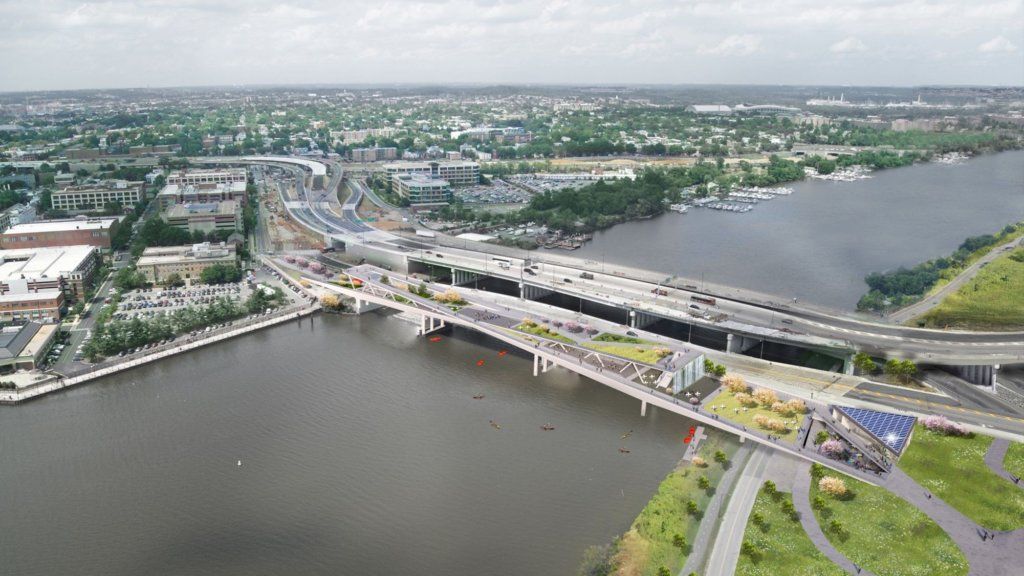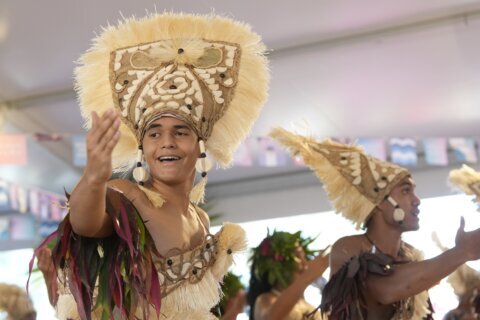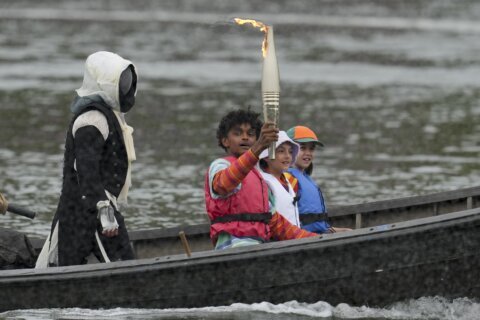To Brenda Richardson, the pillars that remain from D.C.’s old 11th Street Bridge symbolize more than aging infrastructure — they embody hope.
For the last several years, Richardson, a member of D.C.’s Ward 8 community, has been working with the nonprofit Building Bridges Across the River (BBAR) to collect input and drum up support for one of its flagship programs: turning the unused bridge that spans the Anacostia River from Navy Yard to Historic Anacostia into an elevated street park.
“Not only will it connect us to Capitol Hill, but the beauty of this bridge is that it will heal our communities. There’s great trauma on our side of the river, and we are looking for some happiness and joy,” Richardson said.
On July 23, those leading the 11th Street Bridge Park announced they are one step closer to turning the park’s renderings into reality after receiving a $5 million gift from Exelon Corporation.
Scott Kratz, director of the 11th Street Bridge Park, said the total cost for the project — which includes construction, design and investments in the neighboring Ward 8 community — is projected to reach $139 million. Currently, $111.5 million has been raised from both public and private funds, including about $38 million from D.C. through its Department of Transportation. The plan is to break ground in 2021 and open the park in 2023, Kratz said.

Richardson, who has lived in Ward 8 for 30 years, joined up with BBAR eight years ago, mostly to see if a project like the one pitched was ever attainable.
“It was this big vision that we were invited to consider, and I’m like, ‘That would never happen in our neighborhood.’ So I said, ‘I’m going to stick this out and see if it can happen.’ And I did, and I’m still here, and it’s about to happen,” she said.
Plans for the 11th Street Bridge Park — which is part of a larger group of infrastructure reuse projects under the High Line Network — include more than green space and pedestrian pathways along the stretch that joins the two geographically divided sides of D.C. The $5 million contribution from Exelon will fund the park’s solar-paneled environmental education center, which will host community lectures and school workshops centered around sustainability.
Jim Foster, president of the Anacostia Watershed Society, a partner in the center’s programming, called the park “the Arc de Triomphe to the Anacostia restoration.”
“I think that it’s going to be a true monument to the work that we’ve done together as communities all coming together, not only cleaning up the river, but weaving it back into the fabric of the communities here along the river,” Foster said in a news conference on Tuesday.
“We’ve told people for so many generations, ‘Don’t go there; that river’s dirty.’ But today we’re bringing them back and we’re going to have an opportunity for them to really be an integral part of this giant restoration project.”
Plans for the park also include gardens, a community meeting center, a cafe, a performance space, a play space, river access for water sports and a hammock grove to foster mental well-being.
“And throughout the entire park, public art that tells the rich history of the region of both sides of the river,” said Kratz, who gathered ideas for the park’s features from hundreds of community meetings and years of neighborhood outreach.
Included in the cost of the project are several efforts to invest in the community that anchors the bridge on the eastern side of the Anacostia river in Ward 8.
According to census data, 35.7% of Ward 8 residents live below the poverty line, and 47% of children live in poverty. Kratz explained more than $50 million of the project’s budget will be spent on workforce development, small business support and affordable housing initiatives for the neighborhood.
Richardson said the project’s goals, with a focus on education, the arts and community support, “demonstrate that there are other uses for parks; there are greater uses for parks.”
“I remember when we were selecting the architectural drawing of the park, and there was this flowing water with a picture of Frederick Douglass on it. That was just so moving to me, because what that will do for future generations is help them remember our history,” she said.
“Our history won’t be erased just because it’s a new park.”







